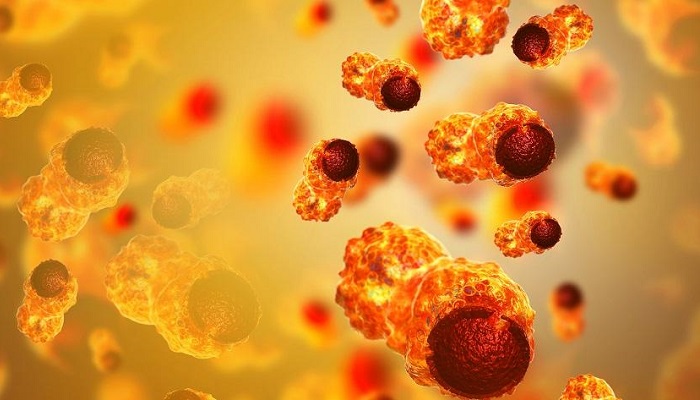STAT5 has long been regarded as an interesting target versus cancer, but after several decades of research, it was relegated to the undruggable category. Now, researchers at the University of Michigan Rogel Cancer Center have found success with a novel strategy.
Researchers discovered that by using a cellular garbage disposal function, they could eradicate STAT5 from cell cultures and mice, paving the way for potential development as a cancer treatment.
STAT5 is important in the development and progression of various blood malignancies. Yet, efforts to find a small molecule inhibitor to block STAT5 have been thwarted. Designing a medication to bind to STAT5 with a high affinity, a metric of how well they fit together, has proven difficult in previous research endeavors. Even if a substance is found to bind with the protein, it may not enter the cell or tissue. It’s also challenging to find a chemical that solely inhibits STAT5 without affecting the other STAT proteins.
At the University of Michigan, Shaomeng Wang, Ph.D., a professor of medicine, pharmacology, and medicinal chemistry, had another thought.
His laboratory has been working on a novel medication development strategy that targets protein breakdown. This is a naturally occurring mechanism that occurs within cells to eliminate undesirable proteins. Consider it like garbage disposal, this technique eliminates undesirable or damaged proteins from cells when they are no longer required to maintain the body’s health.
Using this method, Wang’s lab discovered AK-2292, a protein degrader that targets and eliminates STAT5. The chemical has a high affinity for STAT5 and did not affect other STAT proteins. It was discovered to inhibit cell proliferation in human chronic myeloid leukaemia (CML) cell lines and to cause tumour regression in CML mouse model organisms. It was efficiently absorbed by both cell lines and mouse models.
Unlike a small-molecule inhibitor, which is designed to attach to the protein and interfere with its activity, the protein degrader acts by removing STAT5 proteins from tumour cells and tissues.
They have overcome some of the major difficulties that were preventing scientists from targeting STAT5, according to Wang. Researchers have been working in this sector for the last 20 years, and no small compounds targeting STAT5 have entered clinical trials. This study demonstrates that STAT5 can be targeted using a protein degradation strategy. It’s a novel and fascinating approach to creating a possible therapeutic molecule that targets STAT5 for the treatment of tumors, in which this protein plays a key role.
This chemical provides a very good framework for additional optimization in order to find a drug that they may eventually progress into clinical development, according to Wang.
Many protein degraders are currently undergoing advanced preclinical development investigations in Wang’s lab, where they are being studied for the treatment of cancer in humans in the hope that they will one day enter clinical trials.



















